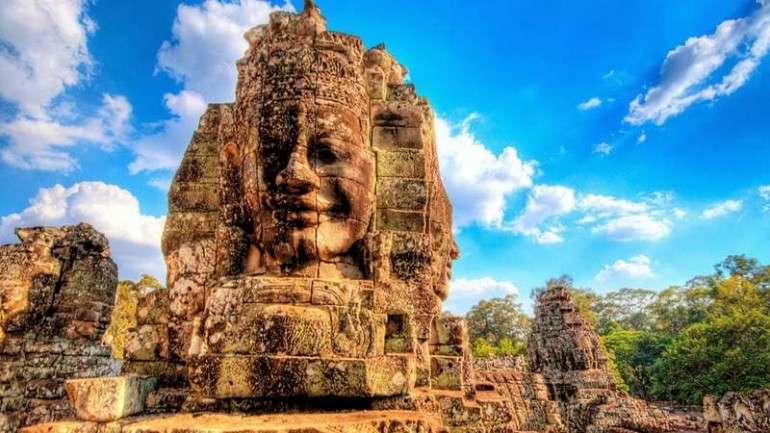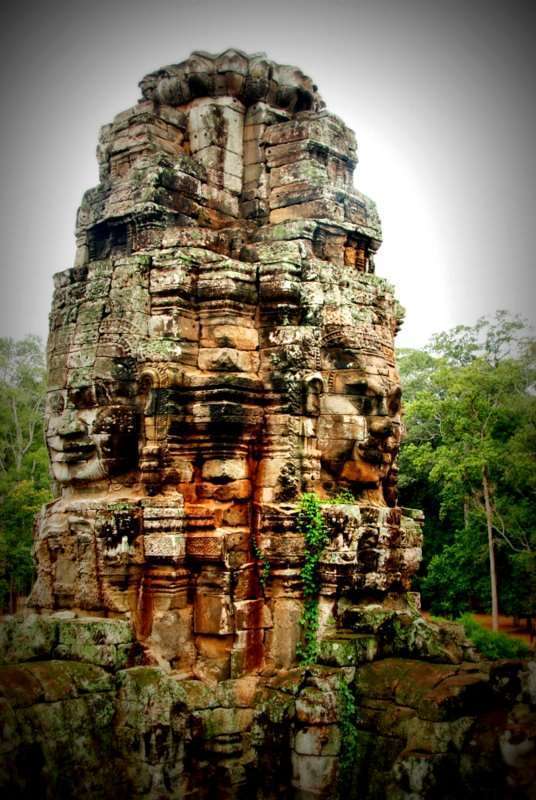The Bayon Temple was constructed by King Jayavarman VII in the late 12th century (1181-1220). It is considered the second most mesmerizing temple in the region after Angkor Wat. As the Khmer Empire entered a period of decline, Bayon became the last stone temple built during this time. It is located 1.5 kilometers away from Angkor Thom.

Due to its location within a forested area, the temple remained hidden in the shadows of trees for many years, preserving its secrecy. In 1916, the temple complex was uncovered after the trees were cleared. Excavation and restoration work had been carried out by the French until the outbreak of war in 1970. Initially, the French believed that Bayon was a Hindu temple dating back to the 9th century, dedicated to Brahma. In 1933, during the resumption of excavation at the central point of the temple, they reached a depth of 14 meters. The discovery of a large broken Buddha, Lokesvara, and a Sanskrit inscription unveiled the temple’s function, symbolism, and history. It was then confirmed that Bayon was a Buddhist temple built in the late 12th century.

The Bayon Temple features 49 towers, and each tower is adorned with four facial expressions. These facial expressions combine the features of the compassionate Bodhisattva Avalokitesvara and the face of King Jayavarman VII. Adjacent to the central tower of King Buddha, there is the presence of Buda Mahathana.
In the recordings of Chinese Ambassador Chou Ta-Kuan, who lived in Angkor Thom in 1295-1296, the central tower of Bayon Temple was referred to as the “Golden Tower” due to its gold plating. He also mentioned that there were numerous Buddha statues around the temple that were also gold-plated. According to the Buddhist belief, the Bayon temple was symbolized as the “Wheel of Life” as per its concept. The outer walls of the Bayon temple feature 11,000 semi-carvings (figures) depicting the daily lives of the people, the royal family, and high-ranking individuals. Similarly, the carvings on the second level inside the temple are also quite fascinating, showcasing royal ceremonies, the journeys of travelers, and symbols related to Khmer, Hindu, and Buddhist mythology.
Among the temples in the Angkor region, Bayon Temple is considered one of the most mysterious and intriguing. That’s why it attracts the attention and interest of many visitors.
